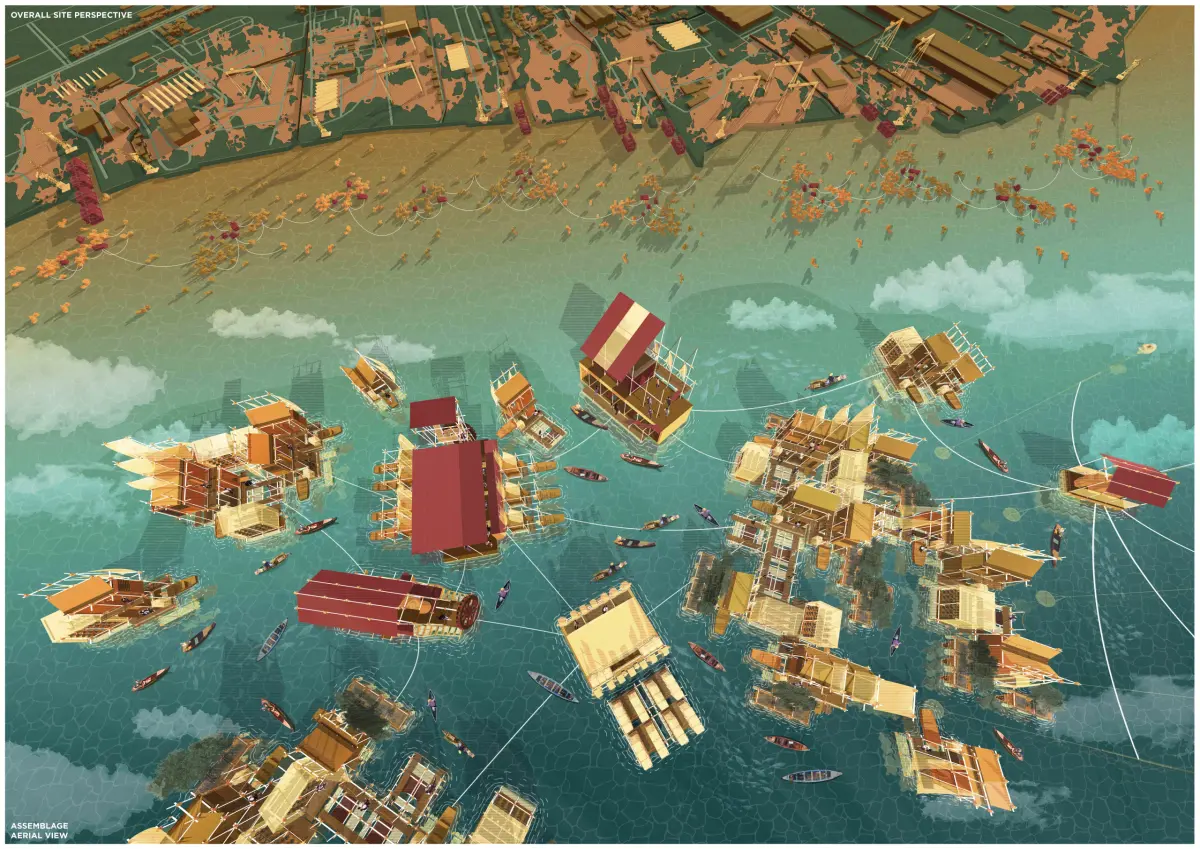
Reinstatement of the Sea Stewards
BY Muhammad Syazwan Menzies Bin Muhd Syafie Charles Menzies
SUPERVISED BY Asst. Prof. Simone Chung (Dr.)
STUDIO THEME ARCHITECTURE’S BACK LOOP
Abstract
The Orang Laut have persisted for over five centuries, utilising their intimate knowledge of the Bays and Capes to create a way of life that is in sync with the natural cycles of the Riau Islands. Their intangible, indigenous knowledge, which has allowed for their constant adaptability, has slowly shifted to work against their favour in recent times. Seen as "backwards" in the eyes of the modern state whose priority was rapid development, the traditionally based Orang Laut saw a gradual increase in marginalization which started to result in loss of territories and livelihood. The coasts which were reclaimed to site various manufacturing and production industries, now stand desolate in the face of mass investor departure. The resultant urban fabric, a terrain of densely packed, juxtaposing typologies built on low-lying land, is now increasingly susceptible to sea-level rise.
As it stands, 1,700,000 Riau Islanders are at risk of being displaced by the accelerating sea-level rise in Batam. The existing fragile infrastructure will cease to function along with the overcrowding of already high-density urban forms whose inhabitants are predominantly living in poverty. This would be further exacerbated by the highly polluted nature of Batam's waters which possess the potential to devastate more of the populace through the proliferation of waterborne contaminants and diseases. Now faced with an impending crucible moment, the mainlanders - who saw themselves as moral superiors to the Orang Laut - look to them for salvation from the rising seas.
Learning from centuries-old, vernacular knowledge could offer new typology alternatives that can both adapt to a dynamic and fluid base such as water, and has a low barrier of entry to ensure the gradual inclusivity of the majority. As a result of its rapid development, the Batam industrial landscape is rife with remnants of the now-defunct manufacturing industries, with plastic barrels, unused processed materials and incomplete ship sections dotting the coasts. Could the discarded remnants of a once hopeful age be given new life as the building blocks of a new coastal typology that draws upon and recognizes the invaluable knowledge of the marginalized indigenous Orang Laut? One that celebrates adaptability, environmental affordance and a circular economy. This thesis proposes to view the shipyards as a new material resource, in place of dwindling natural ones, which is slowly broken down and converted into floating infrastructure that is informed by the key tenets of indigenous knowledge in a bid to provide for an alternative, more resilient urban typology.
Supervisor Comments
Amidst the incontrovertible rising sea levels resulting from global climate change, Syazwan’s thesis recentres the amphibious architecture and spatial practices that have supported the Orang Laut’s centuries-long lifestyle and culture as a resilient model for adaptation. It concurrently explores the creation of alternative economies and settlements along the increasingly derelict shorelines of Batam scarred by industrialisation. In so doing, the architectural project incisive critique on the region’s political economy surfaces socioeconomic vulnerabilities of marginalised communities, and the disastrous environmental upheaval exacerbated by unsustainable industry-led development and urban growth, a consequence of inequitable transnational trade partnerships in the region.
- Asst. Prof. Simone Chung (Dr.)